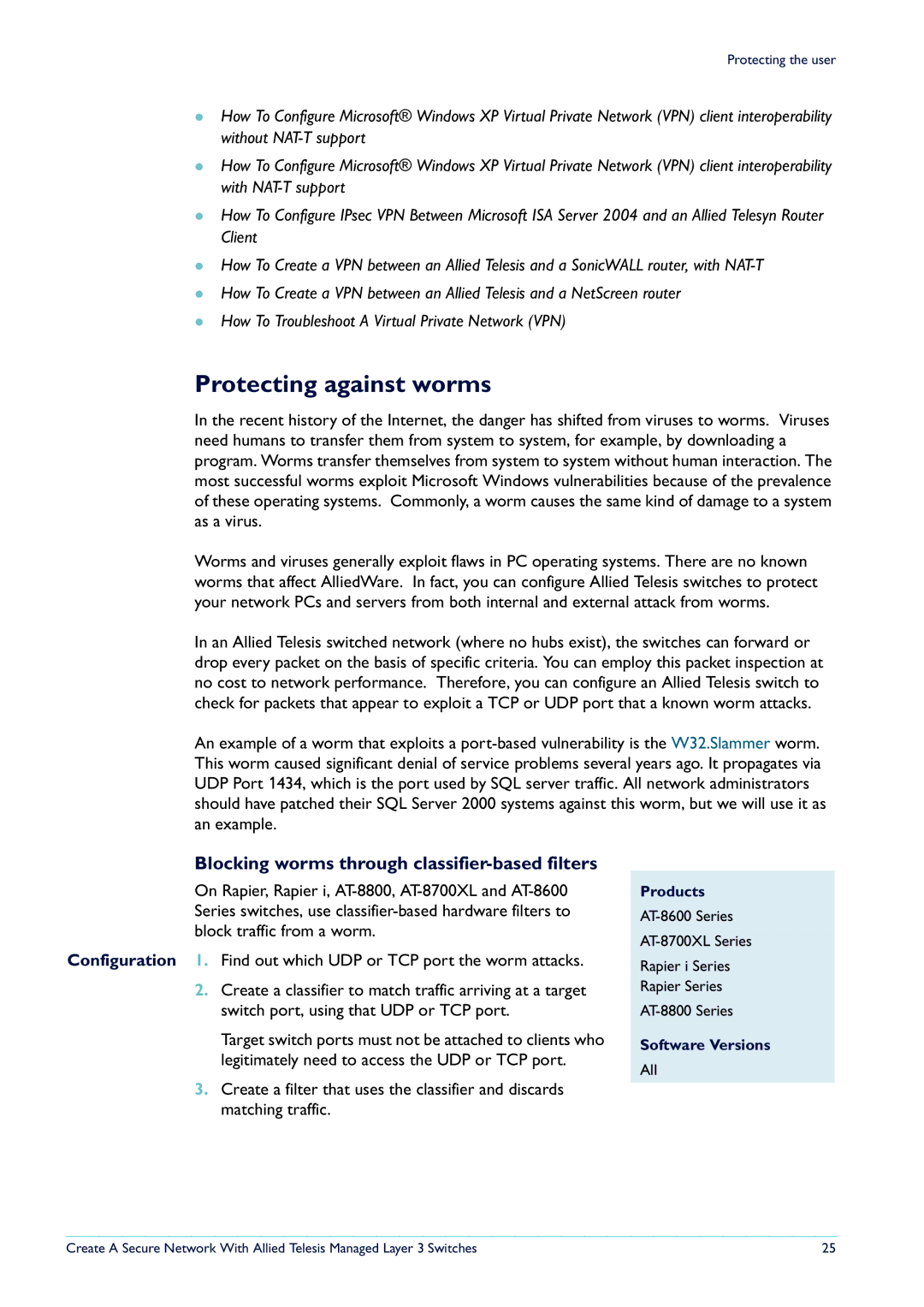
Protecting the user
zHow To Configure Microsoft® Windows XP Virtual Private Network (VPN) client interoperability without
zHow To Configure Microsoft® Windows XP Virtual Private Network (VPN) client interoperability with
zHow To Configure IPsec VPN Between Microsoft ISA Server 2004 and an Allied Telesyn Router Client
zHow To Create a VPN between an Allied Telesis and a SonicWALL router, with
zHow To Create a VPN between an Allied Telesis and a NetScreen router
zHow To Troubleshoot A Virtual Private Network (VPN)
Protecting against worms
In the recent history of the Internet, the danger has shifted from viruses to worms. Viruses need humans to transfer them from system to system, for example, by downloading a program. Worms transfer themselves from system to system without human interaction. The most successful worms exploit Microsoft Windows vulnerabilities because of the prevalence of these operating systems. Commonly, a worm causes the same kind of damage to a system as a virus.
Worms and viruses generally exploit flaws in PC operating systems. There are no known worms that affect AlliedWare. In fact, you can configure Allied Telesis switches to protect your network PCs and servers from both internal and external attack from worms.
In an Allied Telesis switched network (where no hubs exist), the switches can forward or drop every packet on the basis of specific criteria. You can employ this packet inspection at no cost to network performance. Therefore, you can configure an Allied Telesis switch to check for packets that appear to exploit a TCP or UDP port that a known worm attacks.
An example of a worm that exploits a
Blocking worms through classifier-based filters
On Rapier, Rapier i,
Configuration 1. Find out which UDP or TCP port the worm attacks.
2.Create a classifier to match traffic arriving at a target switch port, using that UDP or TCP port.
Target switch ports must not be attached to clients who legitimately need to access the UDP or TCP port.
3.Create a filter that uses the classifier and discards matching traffic.
Products
Rapier i Series
Rapier Series
Software Versions
All
Create A Secure Network With Allied Telesis Managed Layer 3 Switches | 25 |
